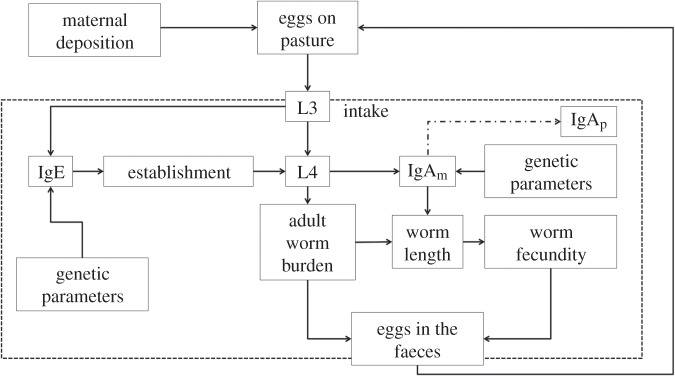Figure 1.

Model schematic. The region inside the dotted line represents the life cycle within the host. Worms develop from egg to adults with the larval stages L3 and L4 being explicitly included in the model. The L3 and L4 larval stages each influence a different component of the immune response of the host and, at the same time, different genetic parameters control the intensity of the immune response resulting from exposure to L3 and L4. The number of adults, as well as IgA, affects the average worm length, which is the major determinant of worm fecundity. The number of worms and the average fecundity determine the number of eggs excreted in the faeces each day. This deposition adds to the current pasture contamination. Arrows indicate the direction of the effect.
